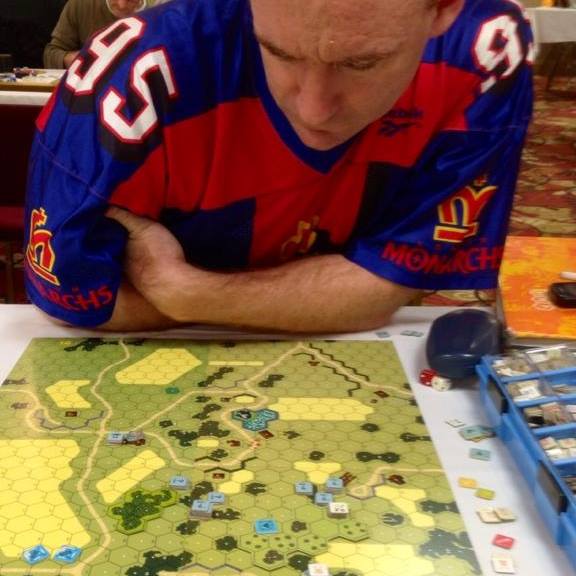
I was listening to episode 65 of the Illuminating Rounds podcast recently, where the hosts, Dave and Martin, began discussing and ranking various official ASL products, with the aim of finally identifying the best one. They ended up disagreeing on which was ‘best’ out of Kampfgruppe Peiper and Doomed Battalions, and it got me thinking: beyond the core modules (that are sort of obligatory to own in order to complete one’s collection), what is my favourite product of all time? I was considering official and unofficial scenario and HASL packs and came up with what might be a rather unusual selection.
Ray Tapio and Critical Hit get a lot of stick these days, often for their habit of re-issuing modules after minor tweaks. This sometimes leads to people buying what they believe is a new product, when it is just a modified version of something they already own – this has happened to me! Be that as it may, in 1997 they published my favourite ever ASL supplement: Kellam’s Bridge – the first of the All American trilogy, designed and researched by the late, great Ian Daglish. It features the actions of elements of the US 82nd Airborne Division on and after D-Day around the causeway at La Fiere, not far from Utah beach, mostly opposed by the German 91st Airlanding Division.
Ian later became a published military historian and the level of research evident in this product is plain to see. The historical map board which featured the famous causeway was small (relative to KGP and Red Barricades) but like them had larger hex sizes than normal. It was mostly green and grey, of slightly different hue to other products, which just differentiated it more to my eyes. There were plenty of scenarios in the pack which ranged from small to medium in size and I found each of them extremely enjoyable, if not always balanced. One of my most memorable playings ended with a wounded American Hero and German Leader, rolling around in the middle of the causeway, locked in melee – an extremely cinematic conclusion!
The other unusual aspect to it was that there was no CG element – only the scenarios. As campaign games quickly get extremely unhistorical, in my experience, to me this was an advantage – there were no distractions of CG purchases to worry about, just a series of scenarios that reflected the battle as it progressed over several days. Also, some of the actions it recreated had been featured in earlier classic scenarios from the old Paratrooper pack, that many of us grognards had progressed through into full ASL, such as ‘Le Manoir’ and ‘No Better Spot to Die’. It was great re-playing the actions on a historical map.
Anyway, it’s been twenty-five years since I first played on the map but I recently dug out my old copy, re-read the historical notes and have decided to play a few of the scenarios again – I’m looking forward to it. Ian later notes that there were some actions just off the maps of the ‘All American’ trilogy (Timme’s Orchard and Shanley’s Hill were the other two) that it sounded like he might be interested in depicting on traditional boards, but never to my knowledge got round to. I might have to do some digging myself and see if I can turn my hand to contributing in a small way to my favourite series. I can’t recommend Kellam’s Bridge highly enough.


Toby, you pointed out a number of “unusual” elements about Kellam’s Bridge. Are they the reasons that make the pack “extremely enjoyable” for you? Are there others?
To be fair, I knackered the last paragraph in my original post. It is possible he answers you there. If so, that’s all on me. Sorry guys. — jim
I would say that the sheer depth of historical research really shone through. That combined with a map depicting a smaller area than usual, with no historical campaign game to worry about. Everything I already mentioned, really!